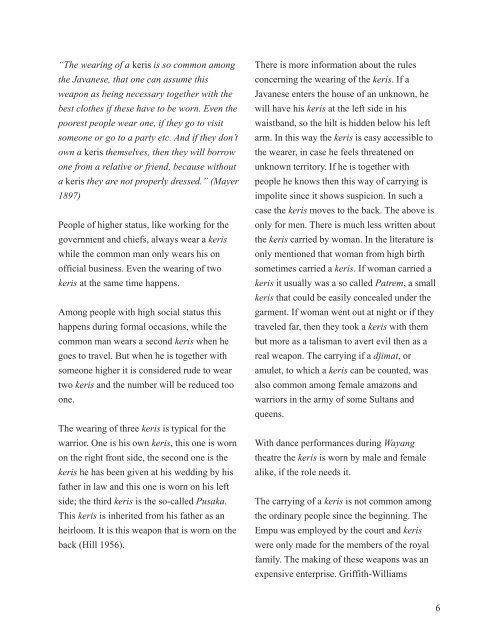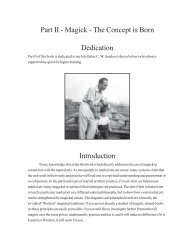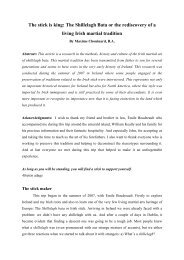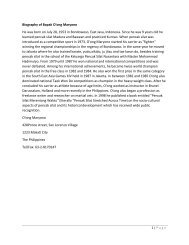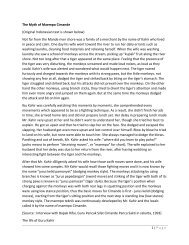Tenaga Dalam - Pukulan Cimande Pusaka
Tenaga Dalam - Pukulan Cimande Pusaka
Tenaga Dalam - Pukulan Cimande Pusaka
You also want an ePaper? Increase the reach of your titles
YUMPU automatically turns print PDFs into web optimized ePapers that Google loves.
“The wearing of a keris is so common among<br />
the Javanese, that one can assume this<br />
weapon as being necessary together with the<br />
best clothes if these have to be worn. Even the<br />
poorest people wear one, if they go to visit<br />
someone or go to a party etc. And if they don’t<br />
own a keris themselves, then they will borrow<br />
one from a relative or friend, because without<br />
a keris they are not properly dressed.” (Mayer<br />
1897)<br />
People of higher status, like working for the<br />
government and chiefs, always wear a keris<br />
while the common man only wears his on<br />
official business. Even the wearing of two<br />
keris at the same time happens.<br />
Among people with high social status this<br />
happens during formal occasions, while the<br />
common man wears a second keris when he<br />
goes to travel. But when he is together with<br />
someone higher it is considered rude to wear<br />
two keris and the number will be reduced too<br />
one.<br />
The wearing of three keris is typical for the<br />
warrior. One is his own keris, this one is worn<br />
on the right front side, the second one is the<br />
keris he has been given at his wedding by his<br />
father in law and this one is worn on his left<br />
side; the third keris is the so-called <strong>Pusaka</strong>.<br />
This keris is inherited from his father as an<br />
heirloom. It is this weapon that is worn on the<br />
back (Hill 1956).<br />
There is more information about the rules<br />
concerning the wearing of the keris. If a<br />
Javanese enters the house of an unknown, he<br />
will have his keris at the left side in his<br />
waistband, so the hilt is hidden below his left<br />
arm. In this way the keris is easy accessible to<br />
the wearer, in case he feels threatened on<br />
unknown territory. If he is together with<br />
people he knows then this way of carrying is<br />
impolite since it shows suspicion. In such a<br />
case the keris moves to the back. The above is<br />
only for men. There is much less written about<br />
the keris carried by woman. In the literature is<br />
only mentioned that woman from high birth<br />
sometimes carried a keris. If woman carried a<br />
keris it usually was a so called Patrem, a small<br />
keris that could be easily concealed under the<br />
garment. If woman went out at night or if they<br />
traveled far, then they took a keris with them<br />
but more as a talisman to avert evil then as a<br />
real weapon. The carrying if a djimat, or<br />
amulet, to which a keris can be counted, was<br />
also common among female amazons and<br />
warriors in the army of some Sultans and<br />
queens.<br />
With dance performances during Wayang<br />
theatre the keris is worn by male and female<br />
alike, if the role needs it.<br />
The carrying of a keris is not common among<br />
the ordinary people since the beginning. The<br />
Empu was employed by the court and keris<br />
were only made for the members of the royal<br />
family. The making of these weapons was an<br />
expensive enterprise. Griffith-Williams<br />
6


